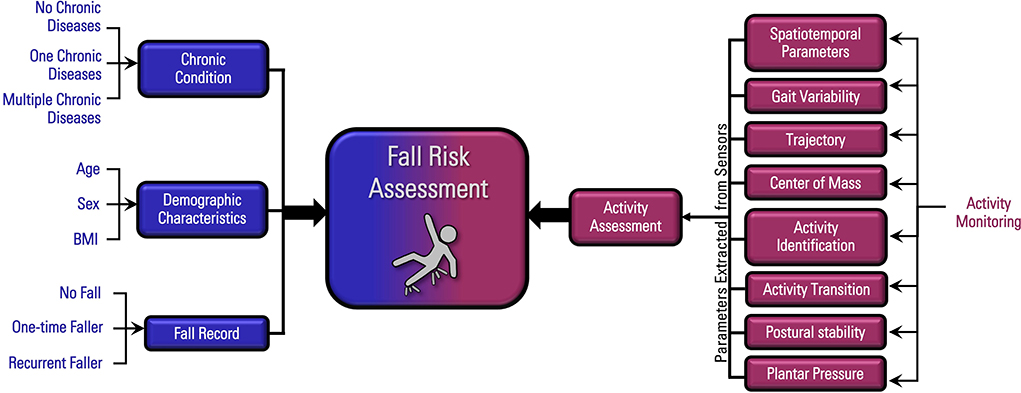The Greatest Guide To Dementia Fall Risk
The Greatest Guide To Dementia Fall Risk
Blog Article
Dementia Fall Risk Things To Know Before You Buy
Table of ContentsThe Ultimate Guide To Dementia Fall RiskDementia Fall Risk for DummiesLittle Known Facts About Dementia Fall Risk.Little Known Questions About Dementia Fall Risk.
A loss danger analysis checks to see exactly how likely it is that you will fall. The evaluation normally consists of: This consists of a series of inquiries about your overall health and wellness and if you have actually had previous falls or problems with equilibrium, standing, and/or walking.Interventions are suggestions that may decrease your danger of falling. STEADI includes three actions: you for your danger of falling for your threat elements that can be enhanced to attempt to protect against falls (for example, equilibrium problems, impaired vision) to decrease your threat of dropping by using reliable techniques (for instance, supplying education and sources), you may be asked several inquiries consisting of: Have you fallen in the previous year? Are you stressed regarding falling?
Then you'll take a seat once more. Your provider will certainly inspect for how long it takes you to do this. If it takes you 12 seconds or even more, it may imply you go to higher risk for a fall. This test checks toughness and balance. You'll being in a chair with your arms crossed over your breast.
Move one foot midway forward, so the instep is touching the huge toe of your other foot. Move one foot totally in front of the other, so the toes are touching the heel of your various other foot.
The Ultimate Guide To Dementia Fall Risk
Many drops take place as a result of numerous contributing variables; as a result, handling the danger of falling begins with determining the factors that add to fall threat - Dementia Fall Risk. Several of one of the most relevant threat factors consist of: History of previous fallsChronic clinical conditionsAcute illnessImpaired stride and balance, lower extremity weaknessCognitive impairmentChanges in visionCertain risky medicines and polypharmacyEnvironmental elements can likewise enhance the threat for falls, consisting of: Inadequate lightingUneven or harmed flooringWet or slippery floorsMissing or damaged handrails and get barsDamaged or improperly fitted equipment, such as beds, wheelchairs, or walkersImproper usage of assistive devicesInadequate guidance of individuals staying in the NF, consisting of those who show hostile behaviorsA successful loss danger management program requires an extensive scientific assessment, with input from all members of the interdisciplinary group

The care plan should additionally consist of treatments that are system-based, such as those that advertise a risk-free atmosphere (proper lights, handrails, get bars, and so on). The performance of the treatments ought to be evaluated regularly, and the care strategy revised as needed to reflect modifications in the loss danger assessment. Applying a fall threat monitoring system utilizing evidence-based finest practice can reduce the prevalence of drops in the NF, while limiting the possibility for fall-related injuries.
The 4-Minute Rule for Dementia Fall Risk
The AGS/BGS guideline suggests screening all grownups matured 65 years and older for fall risk each year. This testing contains asking clients whether they have actually fallen 2 or more times in the previous year or sought clinical focus for a loss, or, if they have actually not dropped, whether they feel unstable when strolling.
People who have actually fallen when without injury ought browse around this web-site to have their balance and stride evaluated; those with gait or equilibrium irregularities ought to get added evaluation. A history of 1 fall without injury and without gait or equilibrium troubles does not call for more analysis past continued annual fall threat testing. Dementia Fall Risk. A fall threat assessment is called for as part of the Welcome to Medicare evaluation

Getting The Dementia Fall Risk To Work
Recording a drops background is just one of the quality signs for fall avoidance and management. A crucial component of risk assessment is a medicine review. Numerous classes of medications enhance fall danger (Table 2). copyright medications in certain are independent predictors of drops. These medicines tend to be sedating, modify the sensorium, and harm equilibrium and stride.
Postural hypotension can commonly be eased by minimizing the dose of blood pressurelowering medicines and/or stopping medications that have orthostatic hypotension as a side impact. Usage of above-the-knee support tube and copulating the head of the bed boosted may additionally lower postural decreases in high blood pressure. The preferred aspects of a fall-focused physical evaluation are shown in Box 1.

A Pull time better than or equivalent to 12 seconds suggests high fall danger. Being incapable to stand up from a chair of knee height without utilizing one's arms shows enhanced fall threat.
Report this page